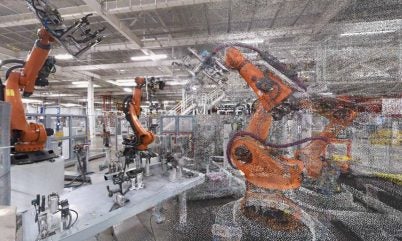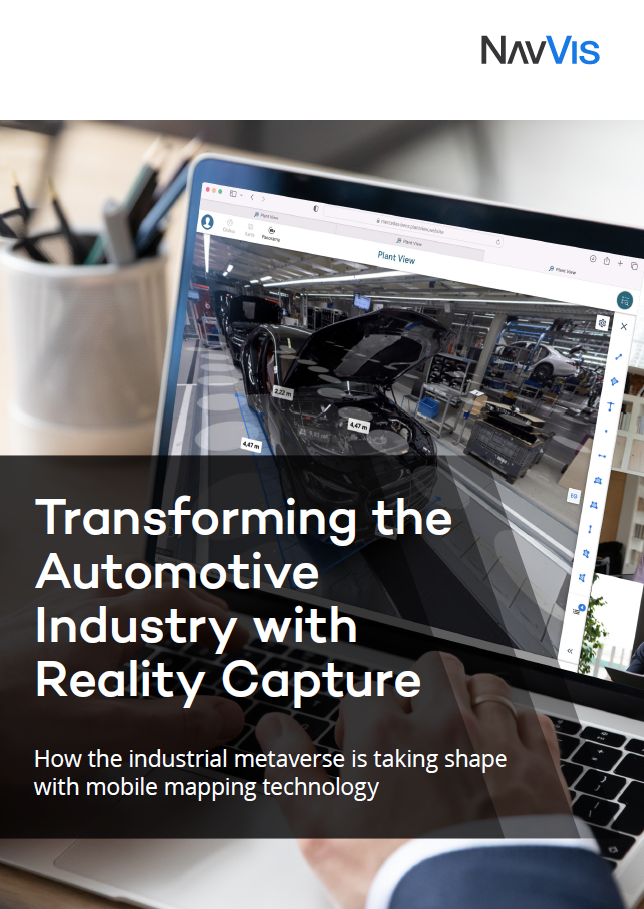
Automotive manufacturers around the world are facing numerous challenges with making production greener, which requires the upgrade of factories to accommodate changing industry demands.
Many automotive manufacturers are investing heavily to deliver the transition to battery electric vehicles (BEVs) as the phasing out of new petrol and diesel engines begins within the next decade. GlobalData predicts that by 2025, BEVs will account for 18% of the total market share, with global production reaching 17.3 million units. Provided the upward trajectory continues, BEVs will rise to 28.3 million units by 2028 to make up a 28% share of the light vehicles market.
However, changes required by the industry go beyond the zero-emission electric vehicles on the road. Production processes must also be adapted to reduce the environmental impact of manufacturing and comply with the latest regulations. For many, green factories are the end objective. Yet the substantial changes to production lines and the switch to renewable energy supplies require careful planning.
According to Paul Hänchen – Senior Solutions Manager at reality capture and digital factory specialists, NavVis – automotive manufacturers face two major hurdles.
“One key challenge for manufacturers is reducing their carbon footprint,” he says. “While installing new equipment or improving the factory infrastructure can help lower energy consumption, the use of renewable energy, and focusing on water effluent management and waste management is equally important.
“Another challenge is when machines are not performing well. Technology can help users monitor their performance via sensors, and receive data on the temperature of the machine, hours of usage, and the amount of pressure in the machine.”
Mobile mapping systems: making automotive manufacturing greener
Digitalization is playing a key role in supporting production changes with major automotive manufacturers turning to technology.
Deployment of mobile mapping systems is a growing trend, allowing users to digitally capture comprehensive spatial data and complete panoramic images of a facility simply by walking through it and using a portable scanning device. The technology enables manufacturers to plan their operations more efficiently to increase sustainability. Gaining full visibility across production facilities can help manufacturers identify the ideal locations for energy efficiencies and optimize resources.
“Mobile mapping can help when you set up a facility as you can visualize the layout. It can be used in different settings. For example, when deploying renewable energy such as installing a photovoltaic system or a wind turbine. It can also provide reliable information to determine how much space is available for installation and send the captured data to the supplier,” explains Hänchen.
“In automotive production, installing new technologies and building the right infrastructure can help manufacturers reduce their carbon footprint,” he adds. “When manufacturers capture data from their production facilities using this technology, they are provided with insights into how to improve their sustainability efforts.”
The automotive manufacturers embracing digital representations
BMW claims it has delivered 30% in savings for production planning time by implementing the NVIDIA Omniverse platform across its operations. Digital representation technologies enable the company to test and refine the configuration of each model and the production line in the virtual space, with information then applied to the physical world. To build these virtual environments, the company has been using NavVis’ mobile mapping and digital factory solutions to capture spatial data and images of more than four million square meters of its plants. BMW aims to deploy reality capture technologies across the majority of its factories worldwide to create a network of digital representations.
Meanwhile, GlobalData research suggests that Volkswagen could become one of the largest global manufacturers of battery electric vehicles by 2028 in terms of global production volume. To achieve this, the company has allocated billions of euros to support the necessary upgrades across its factories. Volkswagen has also been using NavVis’ digital factory solutions to capture point cloud data across its facilities.
“Most information planners need come from site evaluations for upcoming projects or process optimizations,” says Nate McCall, Senior Solutions Manager at NavVis. “Being able to plan things with better data means manufacturers can incorporate previously unseen or unknown improvements and avoid costly mistakes. Being more energy efficient in terms of designing and installing equipment can be one of these improvements.”
One of the key benefits for manufacturers conducting remote inspections of a factory is that it will contribute to overall carbon-reduction goals by reducing the need to travel.
“There are direct emissions savings for manufacturers using reality capture data in terms of travel as it supports online collaboration in virtual environments that are comprehensive, up to date, and are fundamentally rooted in what is actually in the production environment,” says McCall.
“Customers can meet with colleagues in a virtual environment without having to travel to their facilities around the globe. It enables users to do the same activities as during a face-to-face site visit – but in a more efficient manner.”
Tech to help automotive manufacturers reduce emissions
NavVis provides a range of mobile mapping solutions for the automotive industry that can help decrease the environmental impact of operations.
NavVis Digital Factory Solution provides up-to-date, detailed visualizations of production assets and facilities. NavVis VLX is a wearable system that enables the complete capture of spatial data and 360° panoramic images from a production facility. Captured point cloud data and images are uploaded within seconds via the cloud and then viewable on NavVis IVION, an intuitive web-based platform that has been designed for accessibility and ease of use. The technology has been developed for compatibility with third-party software and platforms, with proven uses in the NVIDIA Omniverse.
“For automotive manufacturers, digitalization delivers tools that can help them increase transparency and collect data, which can be used for better decision-making,” says Hänchen. “Technology such as mobile mapping can be used to improve the planning of an automotive production site, and [also] help fulfill sustainability goals by improving a factory’s infrastructure and reducing carbon emissions.”
As the automotive sector strives to become greener, manufacturers have challenging targets to meet. However, NavVis technology offers a viable means of hitting these targets and gaining a competitive advantage.
To learn how digital factory solutions can optimize the automotive production-scanning process and increase sustainability in your operations, download the document below.


